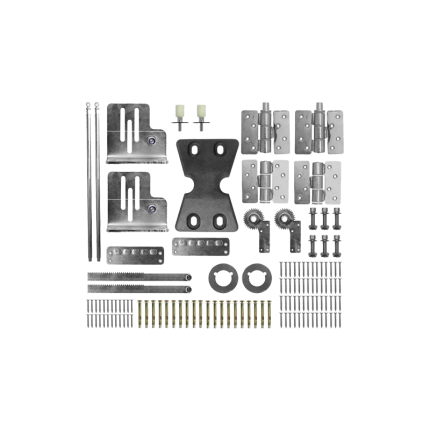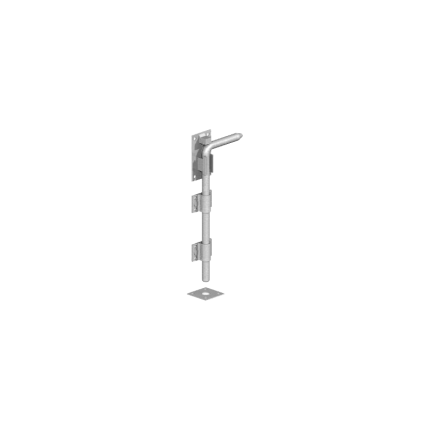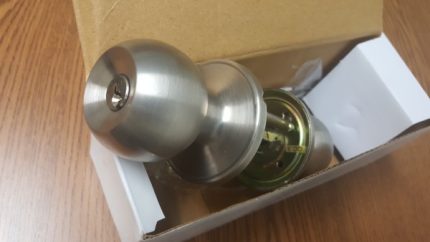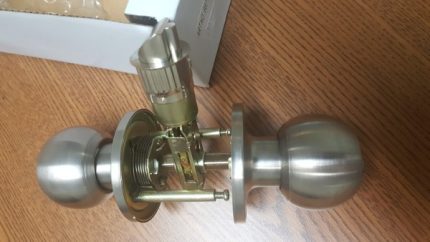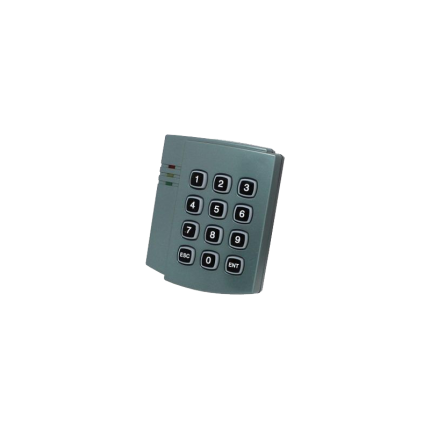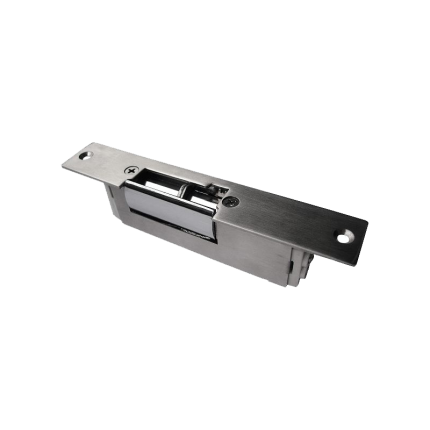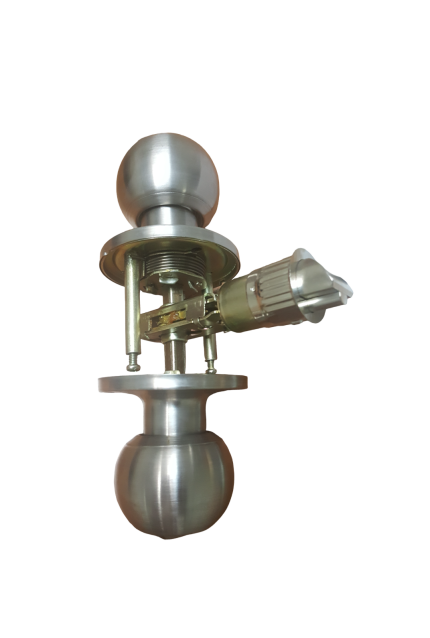gate
Bi-Folding Gate Hardware
Ship or pick up from our office.
Bi-Folding Gate Hardware
Bi-folding gate hardware refers to the mechanical components and accessories used to construct and operate gates that fold in half when opening, allowing for more efficient use of space.These components include hinges, rollers, pivots, guides, and other necessary parts that enable the gate to fold and unfold smoothly.
Key Components and Features:
-
Hinges:These are crucial for the folding action, connecting the gate leaves and allowing them to pivot.
-
Rollers and Guides:These components ensure smooth and stable movement of the gate along a track or within a frame.
-
Drop Bolts:These secure the gate in the open or closed position, providing stability and preventing unwanted movement.
-
Handles:These are used to manually operate the gate.
-
Specialized Mechanisms:Some systems utilize geared hinges or other mechanisms to ensure smooth and reliable operation, especially for larger gates.
Benefits of Bi-folding Gates:
-
Space Saving:Bi-folding gates require less space to open compared to traditional swinging gates, making them ideal for areas with limited space.
-
Versatility:They can be used with gate automation systems and are suitable for various gate sizes and configurations.
-
Enhanced Accessibility:Bi-folding gates provide easy access to enclosed spaces without obstructing parking or other areas.
-
Improved Aesthetics:They can be designed with various styles and finishes to complement the overall aesthetic of the property.
-
Cost-Effective:Bi-folding gates can be more cost-effective to automate than traditional double swing gates as they require fewer operators.
Applications:
- Residential driveways where space is limited.
- Commercial and industrial properties requiring secure access.
- Areas with challenging terrain, such as those with gravel surfaces.
- Condominiums and other multi-unit dwellings.
Gate drop ground latch
Ship or pick up from our office.
Gate drop ground latch
A gate drop ground latch, also known as a cane bolt or drop rod, is a hardware mechanism used to secure a gate in either the open or closed position by inserting a rod into the ground.
It's commonly used for single or double gates, including wooden fences, metal gates, and even barn doors, to provide extra stability and prevent unwanted movement.
Here's a more detailed explanation:
How it works:
- The latch typically consists of a rod (the "drop rod" or "cane bolt") and a bracket or receiver that is mounted on the gate.
- When the gate is in the desired position (open or closed), the rod is manually lowered through the bracket and into a hole or receiver in the ground.
- This creates a secure hold, preventing the gate from swinging or being moved by wind or other forces.
- Some designs include a bracket or keeper to hold the rod in the raised (open) position when not in use.
Common uses:
- Securing single or double gates: The drop ground latch can be used on both types of gates to keep them firmly in place.
- Providing stability in windy conditions: It helps prevent gates from being blown open or closed by the wind.
- Securing gates in the open position: It can be used to hold a gate open, preventing it from accidentally closing.
- Reinforcing gate security: It adds an extra layer of security, making it more difficult to force the gate open.
- Suitable for various materials: Can be used with wood, metal, and other gate materials.
Benefits:
- Enhanced security: Prevents gates from being moved by wind or other forces.
- Increased stability: Helps keep gates aligned and prevents sagging.
- Versatile application: Can be used on a variety of gates and in different environments.
- Easy to operate: Simple manual operation to engage and disengage the latch.
- Relatively easy to install: Usually requires drilling holes for mounting the brackets.
Pedestrian gate manual lock (One side key)
Keypad access control K100SC104
Door Strike Lock
Ship or pick up from our office.
Door Strike Lock
An electric strike is an electromechanical lock release device that replaces a standard door strike plate.
It allows a door to be opened remotely, typically via an access control system, without manually retracting the latch. When activated, the electric strike releases the latch, enabling the door to be opened.
Here's a more detailed explanation:
Functionality:
-
Replaces Standard Strike:Electric strikes are installed in the door frame, taking the place of the standard strike plate.
-
Remote Release:They are designed to work with various access control systems, such as keypads, card readers, or intercoms.
-
Activation:When an authorized signal is received (e.g., a code is entered, a card is swiped), the electric strike releases the latch, allowing the door to be opened.
-
Fail-Safe or Fail-Secure:Electric strikes can be configured in either a fail-safe or fail-secure mode.
- Fail-safe: In this mode, the door unlocks when power is lost, making it suitable for safety applications where access is needed during power outages.
- Fail-secure: In this mode, the door remains locked when power is lost, requiring power to unlock, making it suitable for high-security applications.
- Fail-safe: In this mode, the door unlocks when power is lost, making it suitable for safety applications where access is needed during power outages.
How it Works:
- The electric strike contains a solenoid, which is an electromagnet.
- When the solenoid is activated by an electrical signal, it moves a component (like an armature) that allows the latch to move freely.
- This movement releases the door, allowing it to be opened.
Key Differences from Other Locks:
-
Electric vs. Magnetic Locks:Unlike magnetic locks, which use powerful magnets to hold the door closed, electric strikes release the latch mechanism.
-
Remote Access:Electric strikes offer remote access control, allowing doors to be unlocked without manual intervention.
-
Versatility:They can be used with various locking mechanisms, including cylindrical, mortise, and rim exit devices.
Common Applications:
-
Access Control:Electric strikes are a core component of access control systems in commercial and residential settings.
-
Security:They provide a higher level of security compared to standard locks, especially when used with fail-secure configurations.
-
Safety:In fail-safe configurations, they ensure safe egress during emergencies.
-
Specific Areas:They are commonly found in reception areas, daycare centers, and other locations where controlled access is needed.

